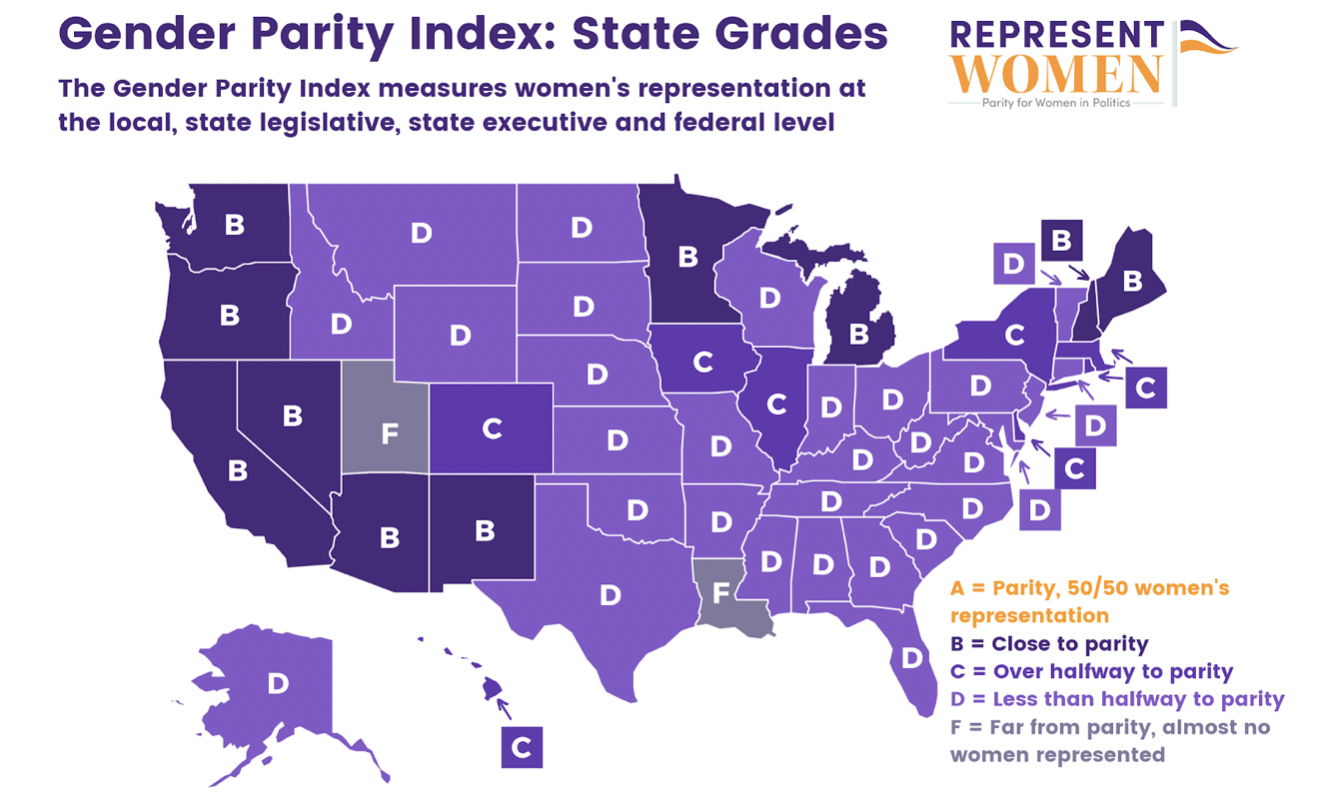For the next year we will observe the Suffrage Centennial, or the 100th anniversary…
Where does your state fall on the Gender Parity Index?

For many, the 2018 elections and the election of the 116th Congress felt like a turning point for women’s representation. The election of the 116th Congress saw a rise in the number of Congresswomen, a record number of women of color, and an increase in the proportion of women in state legislatures. But despite these victories, women make-up only 24% of Congress nearly 100 years since the 19th Amendment passed.
RepresentWomen’s annual Gender Parity Index (GPI) report tracks progress toward gender parity. The GPI scores and grades all 50 states based on women’s electoral success at the local, state, and national levels. As an organization pushing for reforms that will help the country move toward equal representation for women in government, we see the GPI as a tool for tracking women’s representation across states and over time.
The gender parity score is measured on a scale of zero to 100, with zero representing no women in elected office and 100 representing women holding every elected office. States are allocated grades according to the number of points each state receives. As you can see in the map, not a single state is at parity in 2019 but six states — New Hampshire, Washington, Maine, Nevada, New Mexico, and Michigan — are within 10 points of gender parity. For the sixth year running, New Hampshire is ranked first for women’s representation with a score of 49.1 and a “B” grade. After New Hampshire, 17 states are more than 50% of the way to parity, having scores of 25 or higher. But even with the gains made in 2018, the majority of states remain well-behind our goal of gender parity.
Utah, for example, is ranked last, with a score of 8.2 and no women in their congressional delegation or major statewide executive offices. Utah is also one of two states to receive an “F” grade in 2019, alongside Louisiana. Though it is a good sign that there are only two states with grades of “F” in 2019, the lowest ever, it is clear that current progress towards gender parity has been uneven. In the absence of intentional action and systemic reforms that benefit women across the partisan, racial, and geographical spectrum of the United States, we won’t make real progress towards parity.
The 2018 elections undoubtedly brought more women than ever before into political office in the United States. But the 2019 Gender Parity Index serves as a reminder that these victories have not yet broken us free from our slow march to gender parity. Though individual states have made progress towards gender parity, this progress has not come far too slowly and it is too soon to tell if it will be sustained. If we want to see significant, sustainable progress toward gender balance in elected office, we need systemic reforms that institute gender-informed recruitment practices, reform electoral systems, and design modern legislative practices and leadership selection processes so more women can run, win, serve, and lead effectively.
Gilda Geist is a sophomore at Brandeis University and interned at RepresentWomen during the summer of 2019. RepresentWomen is a nonpartisan organization which strives to increase women’s representation and leadership by advocating for reforms so that more women run, win, serve, and lead.






